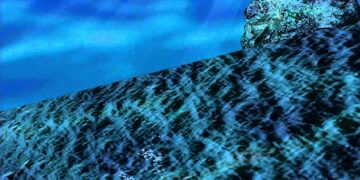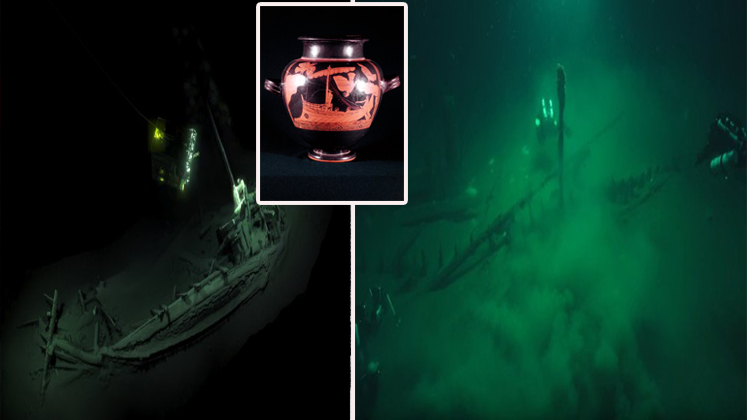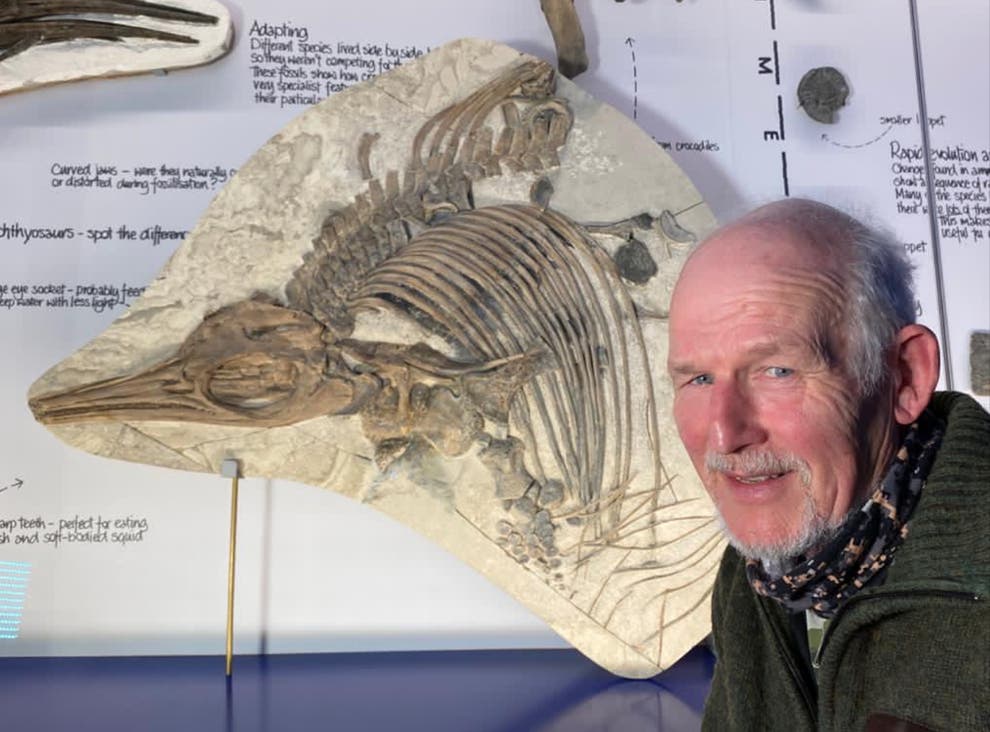The ocean remains a vast mystery, with much unknown about its interactions with the atmosphere, heat exchange, and carbon capture. The more we learn about the ocean, the better we understand its complex chemical processes. In the enigmatic Mariana Trench, Earth’s deepest frontier, secrets darker and more elusive than we can imagine lie hidden. Recently, fishermen casting nets near this colossal abyss, where sunlight never reaches, made a shocking discovery so otherworldly it defies comprehension. Alongside ghostly sea creatures and bioluminescent forms, they pulled something terrifying from the pitch-black waters, challenging what we thought possible in Earth’s oceans. Join us as we dive into the unknown to uncover what lies beneath.
Into the Abyss: Secrets of the Mariana Trench
The Mariana Trench, a crescent-shaped scar stretching over 2,550 km across the Pacific Ocean floor, plunges to 11,033 meters at its deepest point, the Challenger Deep. This dark chasm, detached from sunlight, is a realm of extreme pressure and frigid waters, once thought incapable of supporting life. In 1875, the HMS Challenger probed these depths, revealing they were far deeper than anticipated, sparking decades of fascination. In 1960, Jacques Piccard and Don Walsh descended in the Trieste bathyscaphe, observing pale shrimp and flounder-like fish despite a cracking viewing window. In 2012, James Cameron’s Deepsea Challenger expedition uncovered microbial colonies thriving via chemosynthesis, converting volcanic minerals into energy, proving life flourishes in the unlikeliest places.
Astonishing Discoveries in the Depths
Recent explorations have revealed extraordinary creatures, rewriting the story of our oceans:
- Cusk Eel: Found at 8,370 meters in the Puerto Rico Trench, this eel, related to tuna and seahorses, outdid the snailfish’s depth record by 34 meters. Adapted to complete darkness, it thrives near the seabed, a fierce competitor in the deep-sea realm.
- Snailfish: Dubbed the “impossible fish,” it was discovered at 8,336 meters, shattering beliefs that no fish could survive beyond 8,820 meters. Its unique features allow it to endure crushing pressures in total darkness.
- Giant Amoebas (Xenophyophores): In 2011, massive single-celled organisms, some over 4 inches wide, were found in the Sirena Deep at 6.6 miles, setting a record for the largest known single cells on Earth.
- Dumbo Octopus and Marine Hatchet Fish: The Dumbo octopus glides with ear-like fins, while the hatchet fish, with 45 species, uses bioluminescence to blend into dim surroundings, avoiding predators.
- Frilled Shark: A “living fossil” with frilly gills and needle-sharp teeth, a rare 6-foot specimen was caught in 2015 near Australia, offering insights into ancient species unchanged for millions of years.
- Baleen Whales: Humpback, blue, and fin whales dive up to 200 meters, using baleen to filter vast amounts of water for krill and fish, showcasing intelligent hunting strategies.
- Comb Jellies: These jellyfish-like creatures, thriving despite climate change, offer clues about early brain development. Their nerve cell networks and adaptability raise concerns about their impact on ocean ecosystems.
- Goblin Shark: With a menacing snout and extendable jaw, this slow-moving predator uses stealth to capture prey, its eerie appearance evoking nightmares.
- Zombie Worms: Found at 9,500 feet, these worms drill into the bones of dead sea creatures, consuming fats and proteins in a gruesome process.
- Telescope Octopus: Living between 500 and 6,000 feet, its translucent body and stalk-like eyes make it nearly invisible, embodying the adaptability of deep-sea life.
- Black Sea Devil: This anglerfish uses a bioluminescent lure to attract prey, swallowing creatures larger than itself with its massive, fanged mouth.
- Ping Pong Tree Sponge: A carnivorous predator, this sponge, up to 20 inches tall, uses hook-like spicules to trap and digest prey, revealing the ocean’s harshness.
- Barreleye Fish: With a transparent head and tube-like eyes, it navigates pitch-black waters using light-producing organs, a ghostly predator in the deep.
- Dragonfish: This 6-inch predator’s invisible teeth and glowing body make it a stealthy hunter, snatching prey in the dark.
- Super Giant Amphipod: Over 20 times larger than typical amphipods, these crustaceans shocked scientists, redefining size in the deep sea.
- Crinoids: Sea lilies and feather stars, surviving for 480 million years, anchor to the ocean floor or swim with flexible arms, adapting to harsh conditions.
- Holothurian Sea Cucumber (Sea Pig): With feeding tentacles, it sifts through deep-sea mud, possibly mistaken for the elusive “Pickard’s fish,” thriving where vertebrates cannot.
Strange Sounds from the Depths
In 2016, a remotely operated vehicle in the Mariana Trench captured a low, metallic moan dubbed the “Western Pacific Biotwang.” Unlike whale songs, its unique signature puzzled researchers. Another sound, the 1997 “Bloop,” detected 3,000 miles away, was initially thought to come from a massive sea creature but likely resulted from glaciers or icebergs. These mysterious noises fuel speculation about what lurks in the deep.
Humanity’s Impact on the Mariana Trench
Plastic pollution has reached even the trench’s depths, with 12,000 microplastic pieces per liter found in Arctic sea ice and particles as deep as 10,988 meters in the trench. These tiny fragments, some 11 micrometers small, enter the food chain, threatening marine biodiversity and human health. Despite the remarkable adaptations of deep-sea creatures, they are not immune to this crisis, highlighting the urgent need to combat ocean pollution.
The Mariana Trench continues to reveal life that defies all odds, from ancient survivors to terrifying predators. Each discovery deepens the mystery, proving that the ocean’s secrets are only beginning to unfold. What are your thoughts on these astonishing findings? Share them below.






















